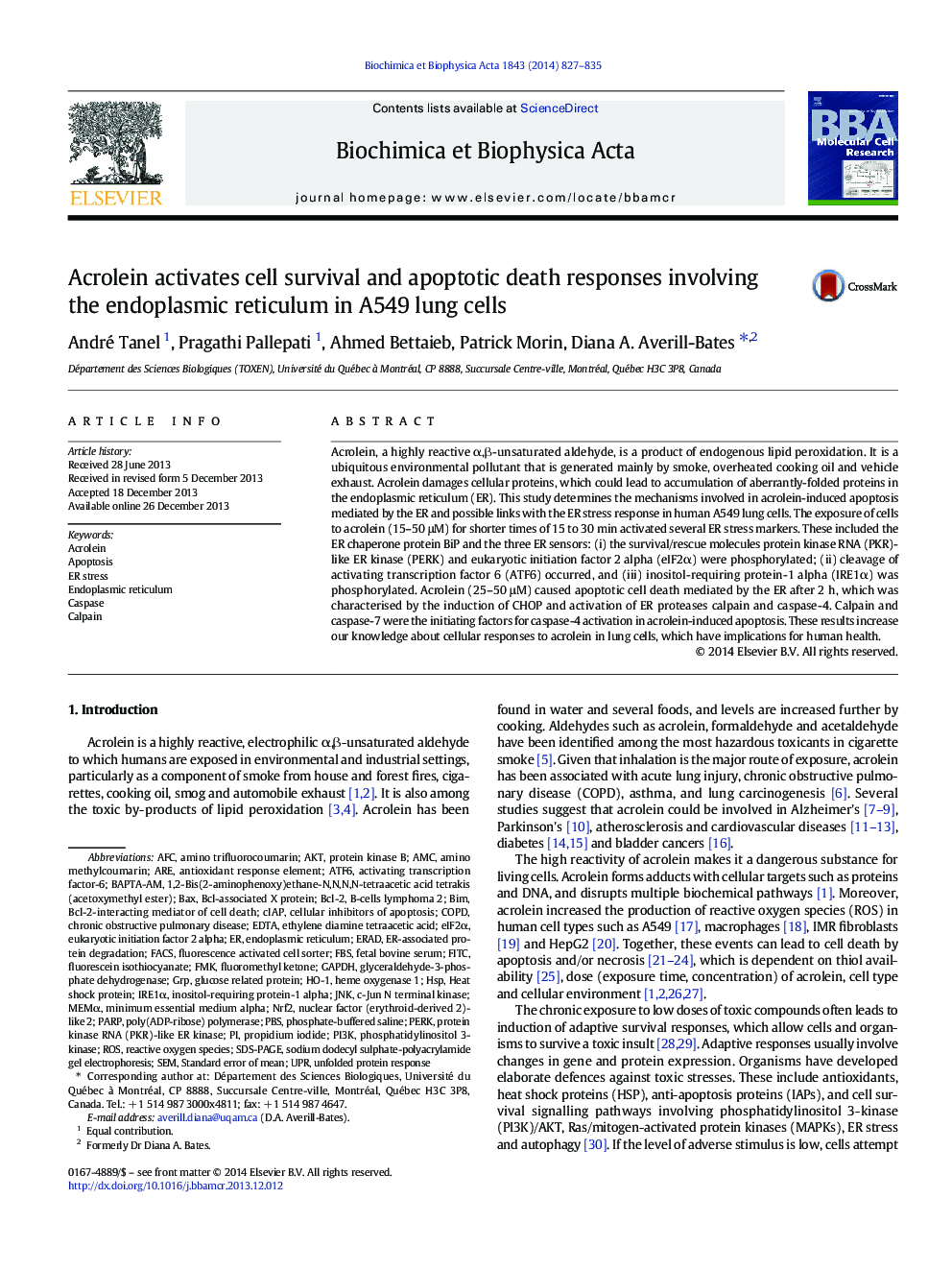| Article ID | Journal | Published Year | Pages | File Type |
|---|---|---|---|---|
| 1950592 | Biochimica et Biophysica Acta (BBA) - Molecular Cell Research | 2014 | 9 Pages |
Abstract
Acrolein, a highly reactive α,β-unsaturated aldehyde, is a product of endogenous lipid peroxidation. It is a ubiquitous environmental pollutant that is generated mainly by smoke, overheated cooking oil and vehicle exhaust. Acrolein damages cellular proteins, which could lead to accumulation of aberrantly-folded proteins in the endoplasmic reticulum (ER). This study determines the mechanisms involved in acrolein-induced apoptosis mediated by the ER and possible links with the ER stress response in human A549 lung cells. The exposure of cells to acrolein (15-50 μM) for shorter times of 15 to 30 min activated several ER stress markers. These included the ER chaperone protein BiP and the three ER sensors: (i) the survival/rescue molecules protein kinase RNA (PKR)-like ER kinase (PERK) and eukaryotic initiation factor 2 alpha (eIF2α) were phosphorylated; (ii) cleavage of activating transcription factor 6 (ATF6) occurred, and (iii) inositol-requiring protein-1 alpha (IRE1α) was phosphorylated. Acrolein (25-50 μM) caused apoptotic cell death mediated by the ER after 2 h, which was characterised by the induction of CHOP and activation of ER proteases calpain and caspase-4. Calpain and caspase-7 were the initiating factors for caspase-4 activation in acrolein-induced apoptosis. These results increase our knowledge about cellular responses to acrolein in lung cells, which have implications for human health.
Keywords
PARPBcl-2AFCHO-1AmCGAPDHHspUPRNrf2ERADeIF2αGRPATF6FITCBcl-2-interacting mediator of cell deathc-Jun N terminal kinaseFBSJnkER-associated protein degradationFACSPBSPI3Kprotein kinase RNA (PKR)-like ER kinaseFMKMEMαcIAPIRE1αROSAktAcroleinEDTAethylene diamine tetraacetic acidER stresssodium dodecyl sulphate-polyacrylamide gel electrophoresisSDS-PAGEBaxBAPTA-AMCOPDChronic obstructive pulmonary diseaseApoptosisstandard error of meanfetal bovine serumendoplasmic reticulumeukaryotic initiation factor 2 alphaantioxidant response elementnuclear factor (erythroid-derived 2)-like 2Phosphatidylinositol 3-kinaseactivating transcription factor-6fluorescein isothiocyanatefluorescence activated cell sorterFluoromethyl ketonePhosphate-buffered salineSEMBIMAREheme oxygenase 1Unfolded protein responseHeat shock proteinprotein kinase BPropidium iodidePERKPoly(ADP-ribose) polymeraseCalpaincaspaseglyceraldehyde-3-phosphate dehydrogenaseReactive oxygen species
Related Topics
Life Sciences
Biochemistry, Genetics and Molecular Biology
Biochemistry
Authors
André Tanel, Pragathi Pallepati, Ahmed Bettaieb, Patrick Morin, Diana A. Averill-Bates,
